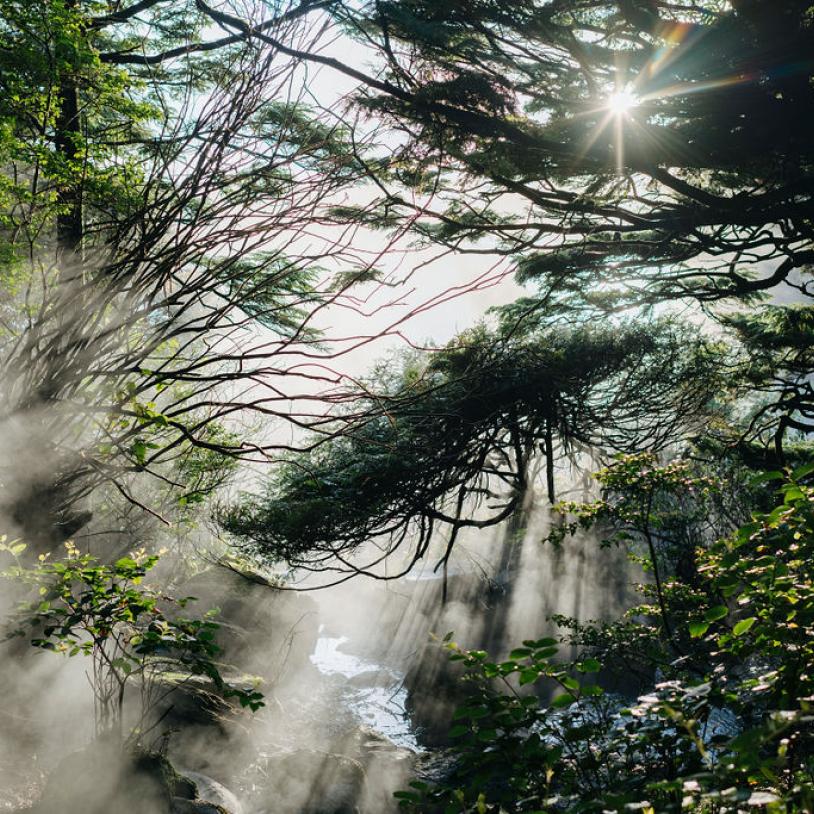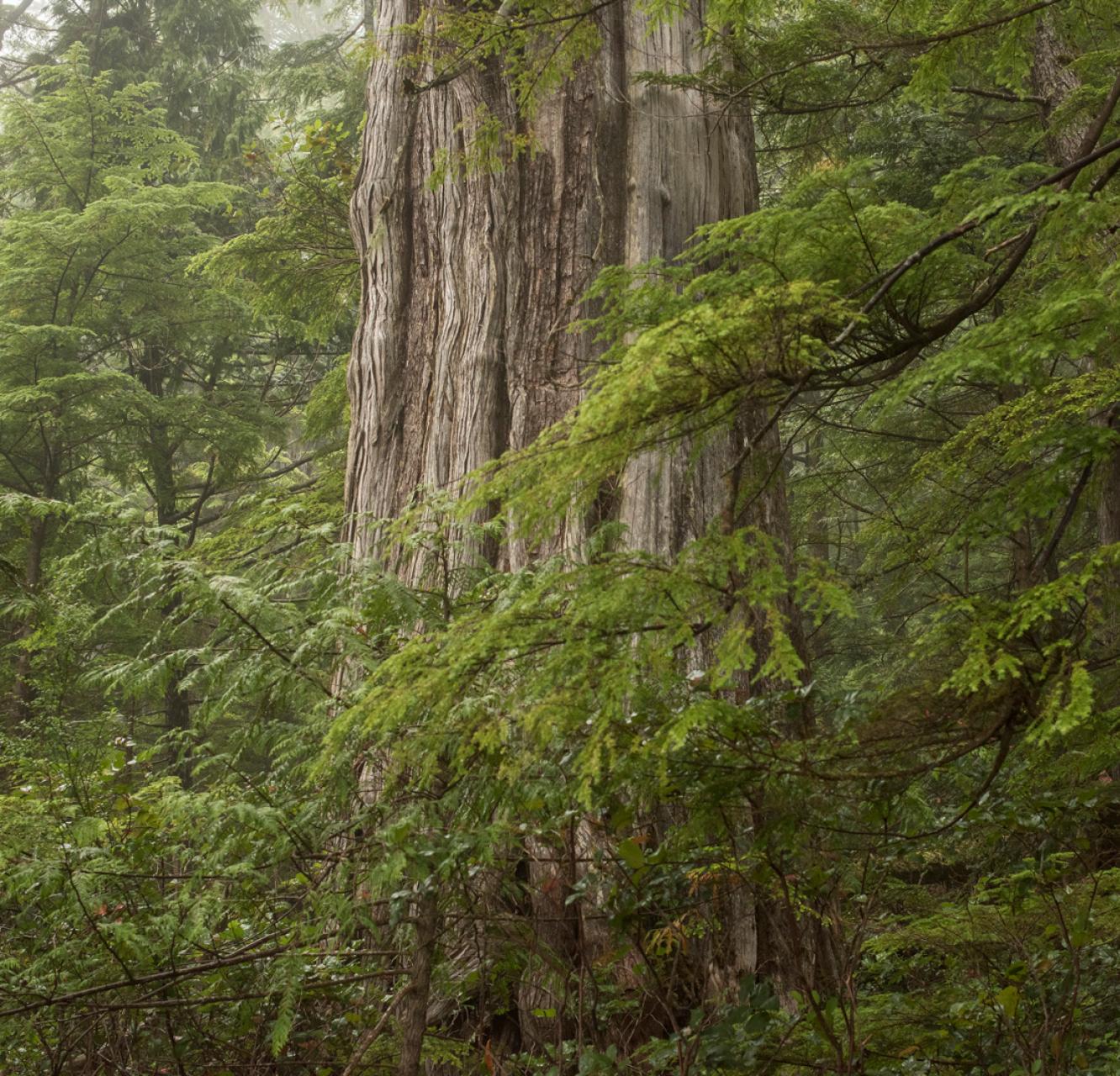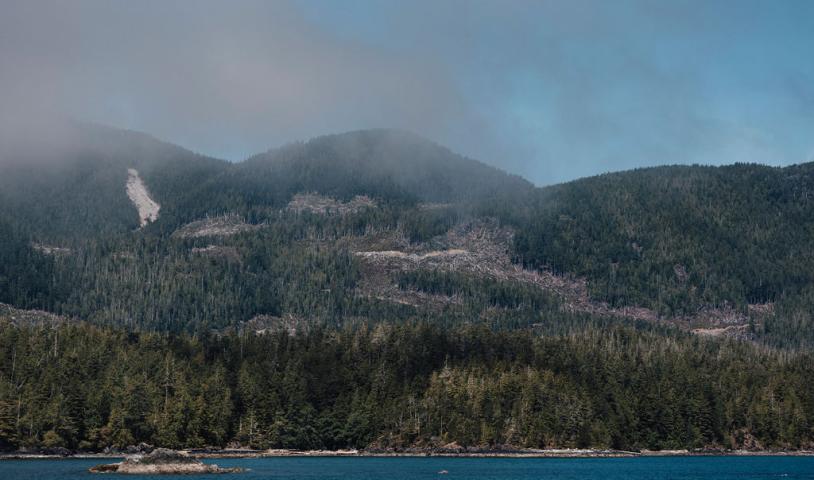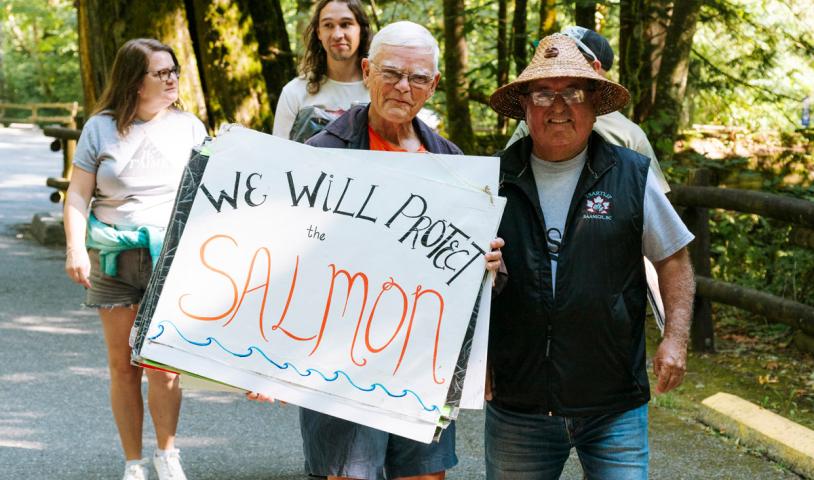Forest giants need protection, says group
Friday, August 7, 2009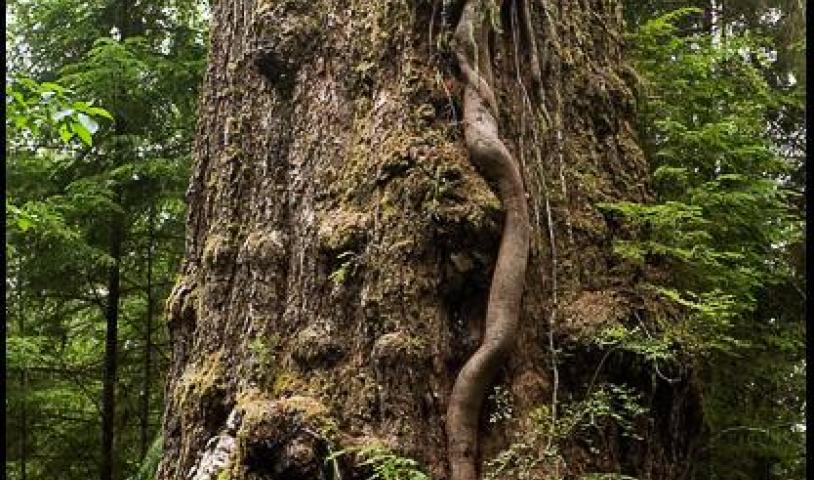
Wilderness committee wants top 100 of each species covered by law
The woody mammoth suddenly appears in front of the small group of hikers, who are brandishing pruning shears and axes used in the mosquito-ridden quest to reach the giant.
After hacking through a tunnel of tangles and fallen tree limbs, they spot the largest Douglas fir in the world stretching straight up to the sky for 73.8 metres.
It's looking a little the worse for wear after 1,000 years, gnarled and scarred, with a few huge branches -- the size of normal trees -- lying on the ground after winter storms, but the top is vigorously sprouting.
Decades ago, government recognized the tree for its size, and, in the 1970s, the company logging the Crown land preserved the surrounding old-growth stand of about two hectares.
But the trail, in the Red Creek area east of Port Renfrew, is overgrown and a sign giving the tree's dimensions is upside down on the ground, rusted and surrounded by broken glass.
Which is why volunteers from Western Canada Wilderness Committee were out hacking and lopping.
"One gets the impression that the Liberal government doesn't want to promote the existence of B.C.'s magnificent old-growth trees, despite their importance for tourism, endangered species and the climate," said Ken Wu, wilderness committee campaign director.
"The more people see these trees, the more expectation people are going to have that the old-growth will be protected."
The environmental group wants government to identify the 100 largest and oldest specimens of each of B.C.'s tree species and legislate protection for them.
Currently, B.C.'s Register of Big Trees website identifies the top 10 largest trees of each species, but does not mandate protection.
If any other species was in imminent threat of extinction, there would be an action plan, Wu said.
"If we have laws that recognize and protect heritage buildings that are 100 years old, why don't we have laws that protect our 1,000-year-old heritage trees?" said committee campaigner Tara Sawatsky.
Earlier, the group stopped to look at the 62.5-metre San Juan spruce -- the world's second-largest Sitka spruce -- towering beside the clear pools of the San Juan River in a forest service campground.
"Wow," said Wu.
The moss-, lichen- and fern-covered trunk and tentacle-like branches are growing table-sized fungus. Beside it is a sign identifying the tree and its dimensions, erected recently by the wilderness committee.
It should be a tourist attraction because old-growth is a huge eco-tourism driver in B.C., Wu said.
"It's what makes us special. Look at the West Coast Trail, Cathedral Grove, Goldstream, Clayoquot Sound -- they're all old growth."
The wilderness committee is campaigning to stop old-growth logging on southern Vancouver Island, where only tiny remnants of old-growth remain, and to phase it out elsewhere in the province as soon as sawmills are re-tooled to use smaller second-growth trees.
But Forests Minister Pat Bell said he is not contemplating changing the tree registry or old-growth management policies.
Trees on the top-10 registry will not be harvested and although the registry will not be expanded to include the top 100 trees of each species, it is unlikely that the giants, usually identified as wildlife trees, would be cut, Bell said.
"No one has ever been able to show me where trees like this have been harvested."
For now, with fiscal restraints, the ministry's priority is managing fire risks in the "interface" zone between human development and forests, rather than building trails to big tree sites, Bell said.
However, if a local community group believes it would be good for tourism, they are welcome to apply for job-opportunity funding, he said.
